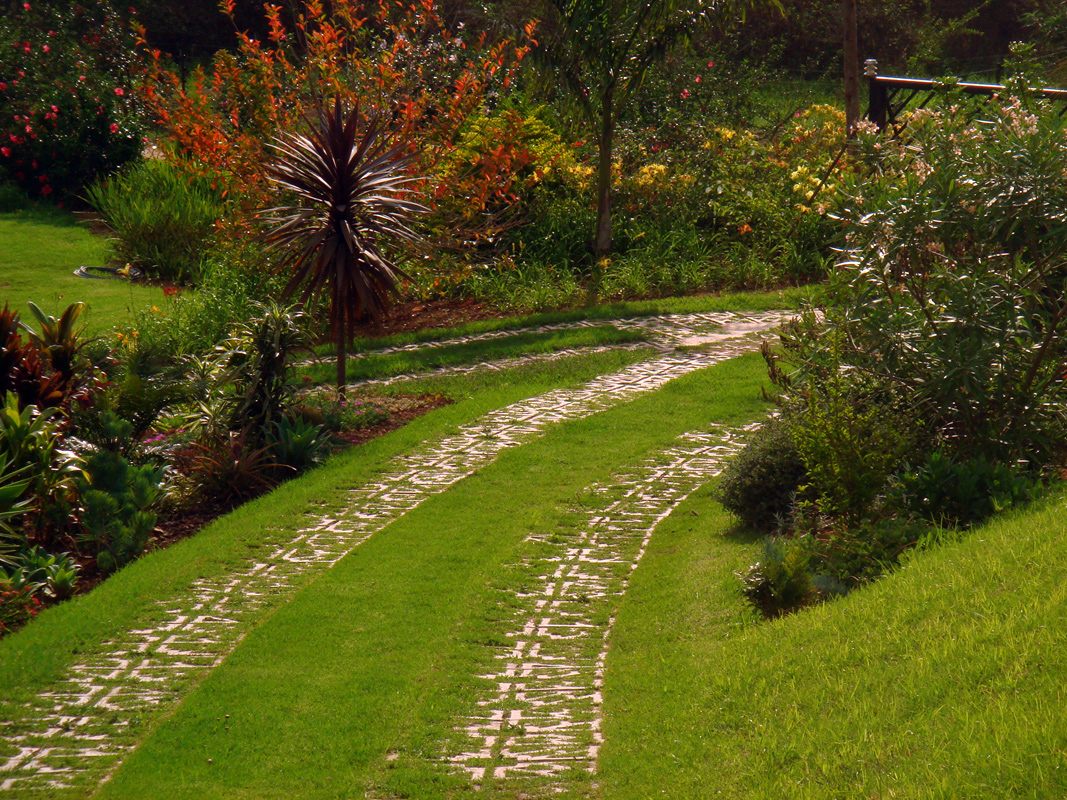EROSION AND PERMEABLE BLOCKS
Mondo Civils have been pioneers in the development of permeable paving, grass blocks and erosion blocks since their introdaution into South Africa in the 1990's. Although these three categories fit different applications, their common purpose is to acheive the same thing:
Get stormwater off the surface (where it is most destructive) and into the subsoil where it is best protected.
Request A Quote
EROSION BLOCKS
have evolved from solid concrete and concrete block paving to provide an environmentally friendly alternative. With the increase in developed land, the resulting increase in stormwater runoff has caused destruction and has decreased the levels of groundwater reserves where it is needed most. A solution has been to replace solid concrete with a flexible system of interlocking permeable blocks that allow natural vegetation to grow in the holes while protecting roots from stormwater erosion. The rough surface, particularly if full of vegetation, slows the runoff water down and allows it time to permeate into the surfaces below. Erosion blocks (and similar products) have become very effective solutions to large open areas, such as car parks, steep slopes, breakwater banks, and water channels. They are cost-effective and fast to install. Some systems can be installed in underwater conditions.

Low cost and Green Grass Blocks driveway

Grass Blocks

GRASS BLOCKS
Grass blocks are commonly used in parking areas where and offer many benefits over regular concrete or clay paving. Most obviously, they provide a natural green finish to the area which also has a cooling effect. They are much friendlier to the environment than concrete or clay. Due to their permeability, they can provide answers to some engineering problems which hard surfaces cannot solve:
- Where there is little or no stormwater run-off due to the inherent restrictions in the levels, the water can seep through the voids of the blocks. Thirsty grass cover also has the ability to use up any standing water through the natural process of evapotranspiration. In simple terms, the subsurface water is sucked up by the roots and evaporates through its leaves.
- Where there is too much run-off that may cause flooding at the lowest end, grass will slow the flow and, through the use of varying levels, can coax a large portion of the water into the ground.
- Where local council regulation demands the retention of stormwater run-off, grass blocks can provide an area that can hold the water without any damage to the road surface or subbase layers.
PERMEABLE PAVING BLOCKS
were introduced into South Africa in about 2002 after tried and tested success in Australia and Europe. It came at a time when urban stormwater systems had reached their capacity which made it difficult to develop areas that would be contributing to the surface run-off of stormwater. Councils began to insist on stormwater designs that would either reduce the volume of run-off water or at least delay it, so the existing infrastructure could cope. This is where permeable paving came into its own.
For more information on the design philosophy of permeable paving, read DESIGN OF PERMEABLE PAVING SUBJECT TO TRAFFIC by concrete block paving expert Dr Brian Shackel












